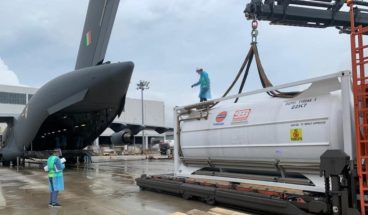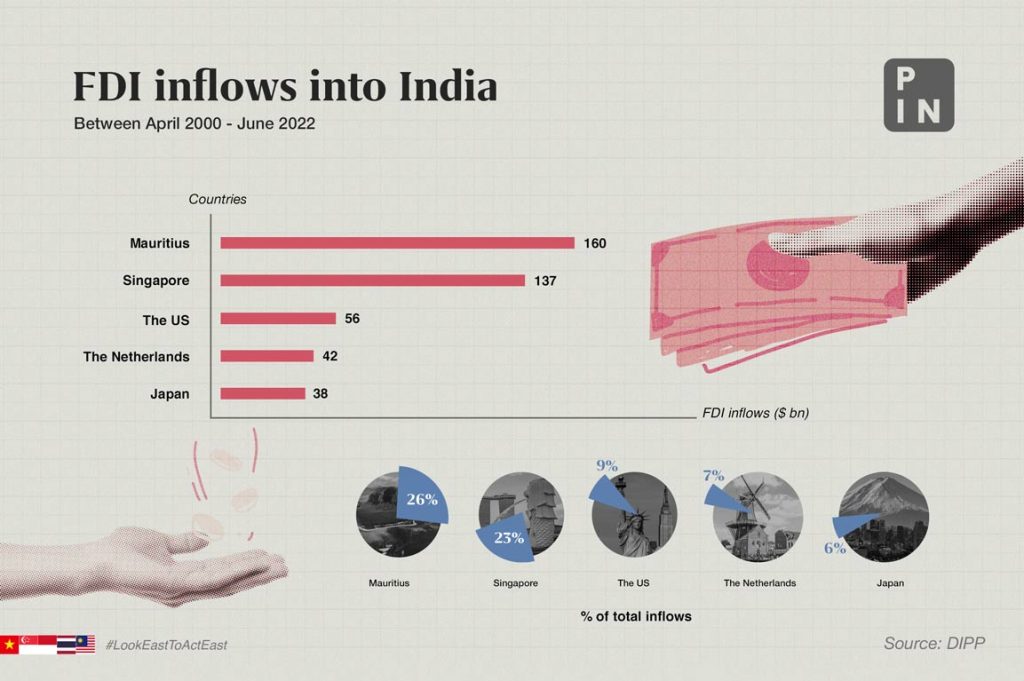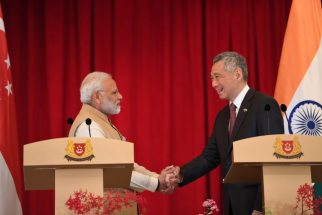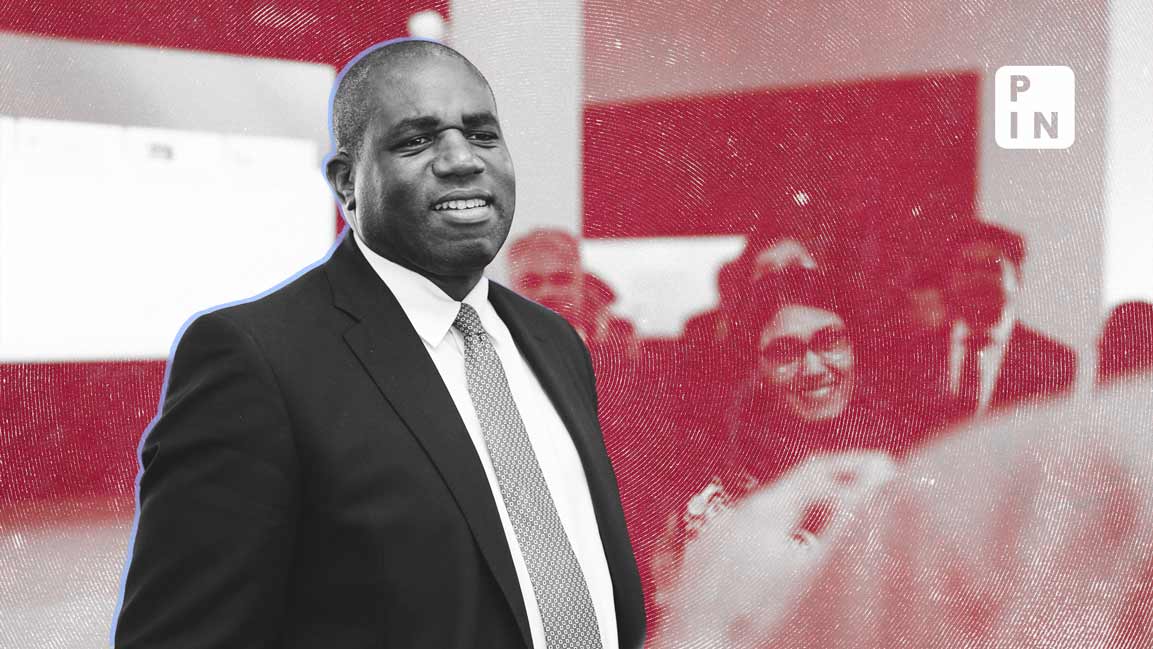- | 1:00 pm
For India-Singapore ties, sky is not the limit
In the second part of the ‘Look East to Act East’ series exploring India’s relations with countries in the Asean region, we look at Singapore

On 12 November, Singaporean deputy prime minister Lawrence Wong posted a video on X (formerly Twitter) featuring him skillfully strumming the strings of a sitar under the guidance of a maestro, before both of them extended Deepavali wishes in Tamil.
In response, Prime Minister Narendra Modi acknowledged the Singaporean leader’s interest in India’s classical music heritage by posting: “May your passion for the sitar continue to grow and inspire others. Best wishes on this melodious endeavor.”
Wong’s masterful rendition of the sitar on the occasion of the festival of lights and Modi’s warm response underline the dynamic cultural diplomacy between the two nations.
India and Singapore have long shared cultural, strategic, and commercial ties, which can be traced back to the time of the Chola empire between the 9th and the 13th centuries. Fast-forward to the 19th century, India and Singapore’s relationship took a new turn. British official Stamford Raffles established a trading post in Singapore, integrating it as a British India colony from 1830 to 1867, thereby deepening the connections between the two regions.
Getting a quick intro to the beautiful tunes of the sitar.
Karthigayan here has been learning for a while, and he has been very patient in guiding me through the basic techniques. Enjoyed the experience, and the chance to learn more about the rich classical Indian music heritage! pic.twitter.com/yLTFCxEcu1— Lawrence Wong (@LawrenceWongST) November 12, 2023
Since its independence in August 1965, the city-state has maintained its close ties with New Delhi in areas spanning trade, military, and culture.
Post the economic reforms of the early 1990s, India’s Look East policy redefined its ties with the city-state, making the latter a key regional ally. Singapore has consistently supported India’s bid for a permanent seat at the UN Security Council and to bolster its presence in the Association of South East Asian Nations (Asean).
A reservoir of mutual trust
During a visit to India in September last year, deputy PM Wong said the city-state sees India as a vital strategic partner, a bond “built on deep reservoirs of mutual trust.”
During that visit, Wong led a high-level delegation to the India-Singapore Ministerial Roundtable (ISMR) in New Delhi, accompanied by minister for foreign affairs Vivian Balakrishnan, minister for trade and industry Gan Kim Yong, and minister for transport and trade relations S. Iswaran.
The summit, aimed at fostering collaboration amid global geopolitical shifts and supply chain challenges post-covid, highlighted the growing strategic partnership between Singapore and India.

India’s amphibious transport dock INS Jalashwa that arrived at Changi in May 2021 to carry oxygen tanks and other medical equipment.
The ISMR, unique to India, underscores Singapore’s commitment to deepening institutional ties with India, analysts said.
Reflecting on the deep-rooted and evolving bilateral relationship, Gurjit Singh, India’s former envoy to Asean, said: “Singapore views India as a counterbalance to China, recognizing the latter’s economic rise more than other Asean countries. It advocates a closer engagement, focusing on digital initiatives, cooperation public health and food security,” Singh said.
“The city-state noted India’s readiness and effectiveness in providing vaccines during the pandemic, leading to the ongoing discussions on public health collaboration between India and Asean,” Singh added.
Source of foreign investment
Today, Singapore is a major source for foreign direct investment into India and New Delhi’s top trading partner in the Asean and eighth globally.
From about $7 billion in 2004-05, bilateral trade, post the signing of a Comprehensive Economic Cooperation Agreement in 2005, soared to $36 billion in 2022-23, with India exporting goods worth $12 billion and importing items valued at $23.59 billion.
“Singapore, a free trader and transport hub, now plays a crucial role in India’s Southeast Asia trade,” Singh said.
Singapore has also turned into a hub for Indian companies setting up their headquarters, making it a key conduit for foreign direct investment (FDI) into India.
Singaporean investors invested $79.5 billion in India last fiscal, while Singapore was the top recipient of corporate investments from India with Indian companies investing $24.48 billion in the city-state during the period, Reserve Bank of India data showed.
“Similar to Mauritius’ earlier role in channeling FDI into India, Singapore now plays a crucial role,” Singh said, adding that Singapore serves as a primary base for global investors and international firms investing in India.
Data available with the Indian High Commission in Singapore show that about 9,000 Indian companies operate in the city-state against 440 Singaporean firms that are registered in India.
Vivek Kathpalia, managing director at the Singapore arm of law firm Cyril Amarchand Mangaldas, said, “India-Singapore relations have strengthened in the past decade, evident across government, defense, technology, and business sectors. Indian firms dominate Singapore’s foreign company landscape. Singapore’s regional headquarter status and finance hub role make it a key player in India investments.”
An investment magnet
Singapore government-run investment firm Temasek, which has invested 6% of its $287 billion net portfolio in Indian firms including Ola, Policy Bazar, Zomato, Manthan, and PineLabs, plans to invest $10 billion more in India in the next three years.
Since it was set up in 1981, Singaporean sovereign wealth fund GIC has actively invested in Indian ventures, opening its Mumbai office in 2010. Over the years, GIC’s portfolio in India has spanned financial services, IT, real estate, infrastructure, healthcare, and consumer goods sectors.

Singapore contributes a significant chunk of total FDI Inflows into India.
“Prominent Singaporean funds like GIC and Temasek are increasingly attracted to investment opportunities in India. Singapore has consistently been a key partner for India, a role it continues to play. Singapore’s role in Asean’s economic dealings with India, in terms of trade and investment, is becoming increasingly significant,” Singh said.
“As India focuses on developing its semiconductor capabilities, Singapore, with its strong manufacturing base, is ideally positioned to offer expertise and investment,” Kathpalia of Cyril Amarchand Mangaldas said.
Flying high
India’s aviation industry has become a magnet for Singaporean investors. The 2013 strategic alliance between Tata Sons and Singapore Airlines, culminating in the formation of Tata SIA Airlines Ltd, was a big step.
Air India and Vistara, both part of Tata group, are expected to merge by March 2024, with Singapore Airlines acquiring a stake in the merged entity arena.
Government data showed Indian visitor arrivals in Singapore increased 15.5% to 792,935 in the first nine month of the current year when compared with the same period last year.
As of 29 October, Singapore Airlines has ramped up its operations to 96 weekly flights connecting eight Indian cities — Ahmedabad, Bengaluru, Chennai, Delhi, Hyderabad, Kochi, Kolkata, and Mumbai. Complementing this, its budget counterpart Scoot is running 44 weekly flights linking six cities: Chennai, Amritsar, Coimbatore, Thiruvananthapuram, Tiruchirappalli, and Visakhapatnam.
Sky is not the limit
Bilateral relations, meanwhile, have soared beyond the skies, extending into space. In July, the Indian Space Research Organisation (Isro) successfully launched seven Singapore-made satellites, including the primary 352kg radar imaging earth observation satellite, the DS-SAR.
This mission, executed by NewSpace India Ltd (NSIL), Isro’s commercial arm, included satellites from Nanyang Technological University and the National University of Singapore.
The deployment of these satellites, which support various Singapore government agencies with satellite imagery, marks a significant advancement in bilateral space partnership.
In April, Isro had successfully launched the PSLV-C55 mission carrying two Singapore satellites weighing 757kg.
The space research partnership between both countries dates back to 2011 when Isro launched Singapore’s first indigenously-built micro-satellite, followed by the launch of two more satellites in 2014, and six satellites in 2015.

PM Narendra Modi with his Singaporean counterpart Lee Hsien Loong in Singapore in June 2018. Courtesy: Indian High Commission in Singapore
During PM Modi’s June 2018 visit to Singapore, both nations signed six deals to enhance collaboration in various fields. These included a research tie-up with Nanyang Technological University, joint initiatives in AI, machine learning, and big data analytics with NITI Aayog, and cooperative projects in healthcare, cybersecurity, and e-governance.
They also agreed on joint PhD programs and research with the Indian Institutes of Technology (IITs) and IISC-Bengaluru, and space research with the Indian Institute of Space Science and Technology (IIST).
Into the digital realm
In February this year, the Monetary Authority of Singapore (MAS) and the Reserve Bank of India (RBI) launched the PayNow-UPI linkage, enabling real-time cross-border payments.
Inaugurated by Modi and his Singaporean counterpart Lee Hsien Loong, the link allows fund transfers using mobile numbers or virtual identifiers.
Initially, Singapore’s DBS Bank, the Liquid Group and select Indian banks will offer the service before it is expanded. The link will offer a cost-efficient, accessible means of remittance, supporting the G20’s goal of improving cross-border payment systems.
Transaction data for the India-Singapore digital payment link, which allows up to ₹60,000 to be remitted each day, have not been made public yet.
Defense ties
In line with India’s strategy to strengthen military relations with Asean, partly as a response to China flexing its muscles in the region, India and Singapore regularly engage in joint naval and army exercises. This ongoing military collaboration forms a key part of India’s broader defense and strategic policy in Southeast Asia.
Both countries have a maritime pact to access each other’s bases and offer reciprocal logistic support for their warships.
Singapore uses Indian military facilities for regularly training its mechanized forces at Babina in Uttar Pradesh, artillery at the Deolali ranges, and F16 fighter jets at Kalaikunda airbase in West Bengal.
India has often reiterated its stance to respect freedom of navigation and trade in response to China’s aggressive and expansionist behavior in the Asia-Pacific.
“Between 2012 and 2017, when the South China Sea issue was prominent, Singapore voiced opposition to the Chinese regime. However, post-2017, the country has had to adjust its stance,” Singh said.
This month, both nations reaffirmed their commitment to bolster bilateral defense ties, focusing on areas such as cybersecurity, at the 15th India-Singapore defense policy dialogue in New Delhi. Defense secretary Giridhar Aramane and his Singaporean counterpart, Chan Heng Kee, co-chaired the meetings that sought to explore avenues to enhance maritime security and multilateral cooperation.
In October, external affairs minister S. Jaishankar met with Singapore’s defense minister, Ng Eng Hen, in the city-state, reinforcing the strong defense relationship between both nations. Jaishankar also met Singapore’s newly elected President Tharman Shanmugaratnam and other ministers, with the discussions largely focusing on fintech, digitalization, green economy, skill development, and food security.
In its role as the coordinator for Asean-India relations from 2021-24, Singapore spearheaded the inaugural Asean-India maritime drill in May. The exercise aimed to boost cooperation and mutual understanding between Asean and India, focusing on shared challenges in maritime security. The initiative was part of Singapore’s wider strategy to foster a safe and collaborative maritime environment in the region.
Omnidirectional policy
Analysts said Singapore, like other trade-focused nations, strategically manages its ties with major powers including Russia, China, the US, and India. However, there’s an observable tilt towards China, Singh said, which raises concerns that Singapore might overlook important cultural and political issues due to its focus on economic interests.
“Singapore’s approach to India has been purely business-like,” G.V.C. Naidu a former founder-chairperson of the Centre for Indo-Pacific Studies at the School of International Studies, Jawaharlal Nehru University, said, adding that the city-state is keen on maximizing the benefits from its relationship with India.
“Historically, Singapore has been a significant investor in China, reaping substantial rewards. It attempted to mirror this success in India, but faced challenges due to India’s bureaucratic and license-heavy environment in the 1990s. Nonetheless, Singapore continued to invest in promising areas, such as the Bangalore Tech Park, capitalizing on the IT sector’s relative freedom from bureaucratic constraints,” Naidu said.
Meanwhile, ambassador Singh raised concerns about challenges faced by Indians in obtaining work or resident visas in Singapore, a country that hosts numerous Indian companies. The emphasis on local employment is leading some businesses to consider relocating to Indonesia for its business-friendly environment, he said.
The treatment of foreigners, including Indians, during the covid pandemic in Singapore has also been a point of contention, Singh said.
With alternative global financial centers such as Dubai, Seychelles, and Gujarat’s GIFT City emerging, there is a growing need for Singapore to pull its socks up to maintain its relevance to India, Singh said.
Despite Singapore’s innovative spirit and technological advancements, its increasingly close ties with China since 2017 raise questions about the future balance of its international relations, especially with India, Singh added.
This is the second of a multi-part series exploring India’s ties with Southeast Asian nations.













